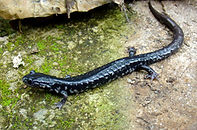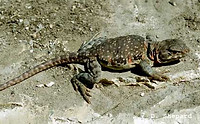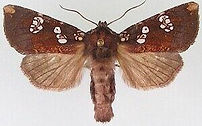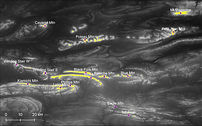
Our Current Research Projects
Research in the Shepard Lab aims to improve our understanding of the ecology and evolution of species while informing conservation efforts.




Species Delimitation and Speciation in Slimy Salamanders (Plethodon glutinosus complex)
Delimiting species is a prerequisite for conservation and for evolutionary studies; however, this can be difficult when morphological variation is lacking, hybridization occurs, and gene lineages have not had sufficient time to sort. Plethodontid salamanders are plagued by all of these problems and consequently, true species diversity has been difficult to establish. These same characteristics, however, make the group a great system in which to study the complexities of the speciation process.
We have sequenced mtDNA from over 400 individuals from almost 300 localities west of the Mississippi River, encompassing the ranges of Plethodon albagula, P. kiamichi, P. kisatchie, and P. sequoyah (Meacham et al. 2024). Next, we are using target capture methods to sequence thousands of loci throughout the genome. We will use these data to examine gene flow in contact zones and delimit species. This project is funded by a State Wildlife Grant from the Arkansas Game & Fish Commission.
Distribution and Abundance of Eastern Collared Lizards in the Ouachita Mountains of Arkansas
Eastern Collared Lizards (Crotaphytus collaris) historically occupied open, rocky habitats scattered throughout much of the Ozark and Ouachita Mountains. Forest encroachment due to fire suppression, combined with a naturally patchy distribution and collection for the pet trade, is considered the primary cause of widespread population declines in these regions. Few historic records of C. collaris exist in the Ouachita Mountains, but little effort has been made to assess the status of these populations or search this broad region for additional populations of the species. Our project aims to: 1) assess the status of previously documented populations of C. collaris through surveys of historic localities, 2) conduct surveys for C. collaris at new locations where potentially suitable habitat exists, 3) determine the habitat and landscape characteristics that predict site occupancy of C. collaris, and 4) estimate abundances of extant populations of C. collaris. Our results will inform future long-term monitoring and conservation actions for C. collaris in Arkansas by identifying target populations in the Ouachita Mountains, determining key habitat and landscape characteristics associated with species occurrence, and establishing the optimal conditions for conducting surveys. This project is funded by a State Wildlife Grant from the Arkansas Game & Fish Commission.
Phylogenetic Relationships and Species Delimitation of the Borer Moth Genus Papaipema (Lepidoptera: Noctuidae) Inferred from DNA Barcodes
Noctuidae (owlet moths) is the most speciose family of Lepidoptera (butterflies & moths). Among noctuids, Papaipema is the most speciose genus endemic to North America with 47 described species and at least 10 undescribed species. Many species look similar but are host-plant specific, and several species are of conservation concern. We generated DNA barcode sequences for 376 individual Papaipema and downloaded an additional 152 sequences from online databases, yielding sequence data for 45 of 47 described species and 7 known but undescribed species. We are constructing a phylogeny and delimiting species using multiple genetic-based methods. We are also examining genetic diversity of the imperiled Rattlesnake Master Borer (P. eryngii) across the species’ range. This project was funded by a State Wildlife Grant from the the Illinois Department of Natural Resources.
Uncovering Biodiversity in Forest Sky Islands of the Ouachita Mountains and Linking it to Ecosystem Function
This project aims to uncover the hidden biodiversity of detrital invertebrates in the Ouachita Mountain sky islands and link patterns of biodiversity to forest ecosystem function. Detrital organisms represent half or more of terrestrial biodiversity but are some of the least well-characterized taxa. Moreover, their activities drive forest ecosystem processes like productivity, nutrient cycling, and decomposition. Recent studies have demonstrated a wealth of new species and endemism in the sky islands of the southern Appalachians and southwestern US, but highlands in the interior US have been largely unstudied. Moreover, how patterns of species richness and endemism relate to ecosystem function in sky islands remains a significant knowledge gap. We will use molecular tools to elucidate invertebrate diversity in the Ouachita Mountains and evaluate how patterns of diversity are explained by habitat and landscape characteristics and are related to ecosystem function. In this way, we will be able to generate unique biodiversity data for an ecologically important forest system and for detrital systems, in general, which will undoubtedly generate new species reports for the region, and likely globally. This information is necessary for informing, prioritizing, and determining conservation approaches for future forest management.
